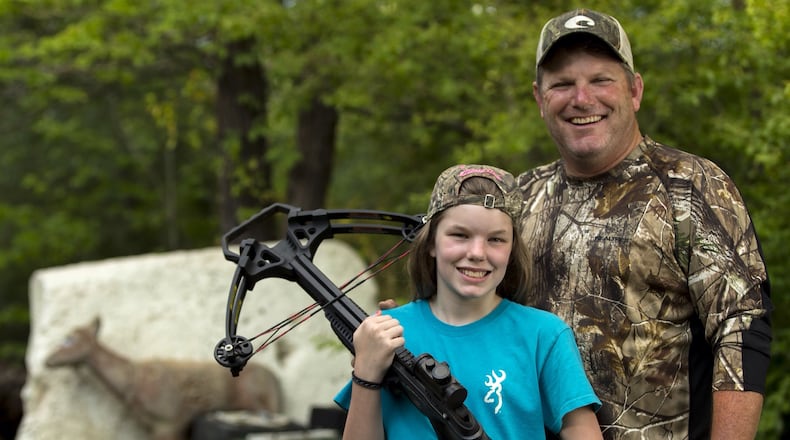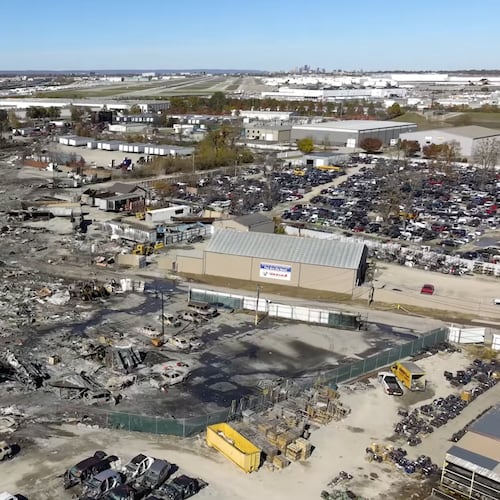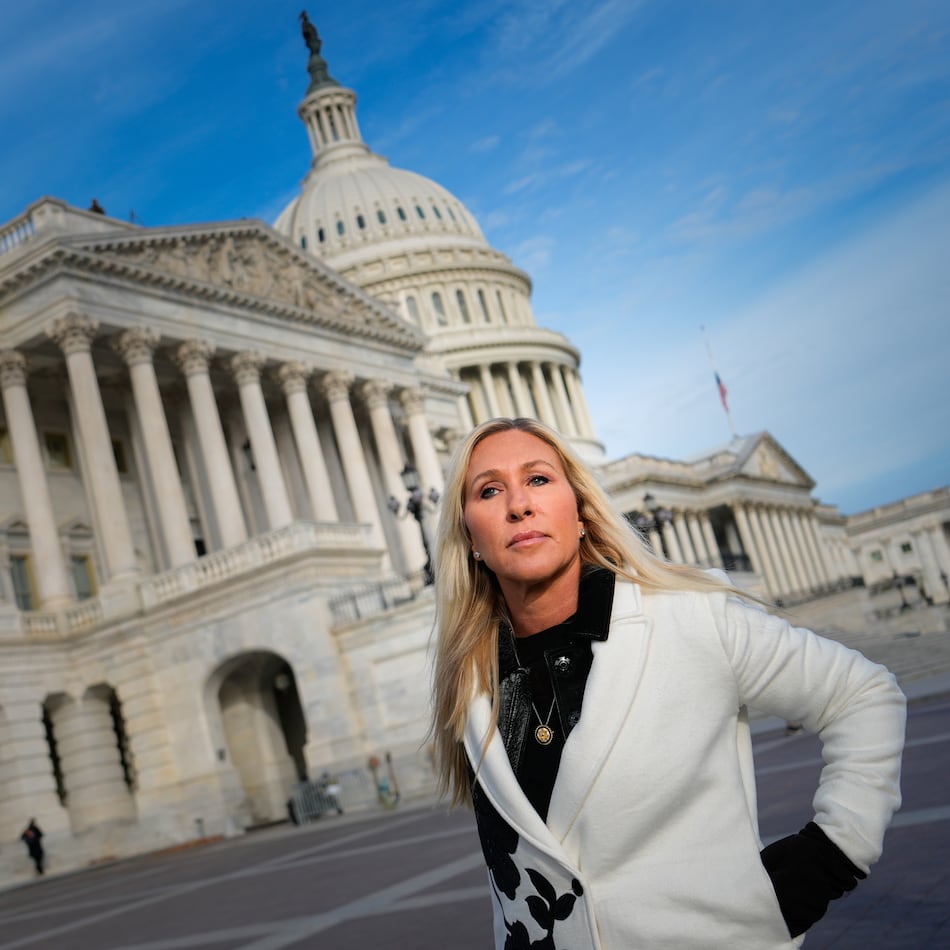Stormy Smith recently turned 12. As (bad) luck would have it, she observed that day in bed; the kid had strep throat.
But, as soon as she’s feeling better, the Cumming youngster will hold the sort of party every girl dreams of, with cake and balloons and friends.
In the woods. At her dad’s hunting camp.
Miss Smith is one of the younger faces in a trend that has state officials surprised and pleased. In Georgia, the number of licensed hunters has increased, reversing a decades-long trend.
The state Department of Natural Resources reports that last year it licensed nearly 400,000 hunters. Six years earlier, in 2009, it had issued slightly more than 273,000 permits. That's a jump of roughly one-third. And it includes a growing number of women: about 28,000 licenses were issued to female hunters last year.
Those totals do not include people who don’t pay for a resident’s license, which costs $19 annually and covers all Georgia game. Hunters under 16, over 65 and landowners hunting on their own property don’t need a license. A DNR hunters’ survey last year indicated that about 250,000 people fall into that category.
That means more than 600,000 Georgians hunted last year.
For state officials, the numbers are more than just an abstract. The fees from hunting permits funds animal-conservation and educational programs. Perhaps paradoxically, an increase in hunting equates to better game management — and quality of life — for the state’s deer, bear, wild turkeys and other creatures. Six years ago, those fees totaled $12.6 million; in 2015, that sum came to $13.2 million
Hunting also means lasting memories. Stormy has been going into the woods with her dad, Todd, for a few years. Last year, she went in with a crossbow. Stormy came out with her first kill, a deer. She also emerged an avid bow-hunter.
“Oh my gosh,” said her dad, who recalls hunting with his uncle decades earlier in the rumpled reaches of north Georgia, “that was the best hunt I’ve ever been on.”
He’s also noticed a shift in the people he meets in the woods, their rifles and bows ready.
“It’s anecdotal,” said, Smith, 48. “I think I see a lot more kids trying to get into (hunting) than when I was a kid.”
Georgia is not an anomaly, either: state and federal figures show hunting in some neighboring states also is on the rise as increasing numbers of sportsmen (and women) venture into forests with shotgun and crossbow, with rifle and bow.
Could it be the influence of a certain bearded family that shot to fame making duck calls?
“Duck Dynasty Effect”
John Bowers is a numbers guy. DNR’s chief of game management, Bowers heads an organization in charge of 1 million acres in 90 wildlife management areas across the state. Hikers, bird watchers, campers and educators visit those tracts regularly. So do hunters.
For years, said Bowers, DNR funded programs stressing the benefits of hunting — for the hunter, certainly, and for the state’s wildlife. But those programs seemed pointless. From 1986 to 2009, the number of licensed hunters declined.
Some of the dip was probably linked to the state’s urbanization; with more people moving to cities, fewer wanted to hunt. Development, officials say, nibbled at the edges of wild areas, reducing hunting land.
Then, in 2010, the state noticed more people hunting than the year before. The trend kept steady, with a “significant increase” in 2013. Perhaps those long-established DNR programs finally bore fruit.
Some hunters think the Georgia Outdoor News, a monthly whose title explains its coverage, has helped make the sport more popular. Others cite QDMA, or Quality Deer Management Association, an Athens-based organization dedicated to hunting and preserving the whitetail species, with promoting hunting.
Bowers has another theory, too. "I call it the 'Duck Dynasty' effect," Bowers said. The cable show, showcasing a camo-clad family that embraces hunting, may have prompted some people to consider picking up a gun, he said.
Then there's "Swamp People," another show whose title precisely describes the show's stars. It may have given hunting a boost, he said.
Bowers doesn’t discount the growing popularity of eating organic and locally sourced food, either.
“You’re not going to get any more natural and organic than going out and killing your own food,” he said. “We’ve been doing that forever. We just didn’t call it ‘organic’.”
A Family Affair
Walter Lane, who manages DNR’s hunter development program, has seen the numbers of young hunters grow. The program, created five years ago, emphasizes recruiting new hunters and keeping the old ones. The initiatives “run the gamut,” Lane said.
For example, about 30,000 students participate in archery programs every year. Another stresses clay pigeon marksmanship. A shooting awareness program operated through the University of Georgia’s 4-H program attracts about 6,000 young shooters. An estimated 14,000-15,000 young people take state-sponsored firearm-safety courses annually, he said.
“If you get youth interested in target shooting , it’s certainly possible to get them interested in hunting,” he said.
Sonny Seals has seen that first-hand. He’s president of the Cobbs Legion Hunting Club. It comprises about 70 members and leases nearly 3,000 acres along the Cherokee-Bartow counties line. Nearly two decades old, the club encourages youth participation.
Even if no one bags anything, the time in the forest is not wasted, said Seals, a retired truck driver. He speaks from experience: nearly 60 years ago, he first sat in the Paulding woods with his dad and grandfather, listening for the crackle of leaves, the snort of something wild. He was 10.
“A young man or woman, 8, 10 or 12 years old, if they don’t see even a possum, … they’re still sitting in the woods with dad,” said Seals. “I’m seeing more and more of my members bringing kids with them.”
That’s been good for hunting’s image, he added. “It used to be good ol’ boys drinking beer all night and swapping lies,” Seals said. These days, he said, it’s not unusual for families to come to the camp — some to hunt, others just to spend time in the woods.
And some, like a Cumming 12-year-old, may bring her friends into the forest for cake and ice cream and balloons. Maybe they’ll come back with crossbows.
About the Author
Keep Reading
The Latest
Featured


